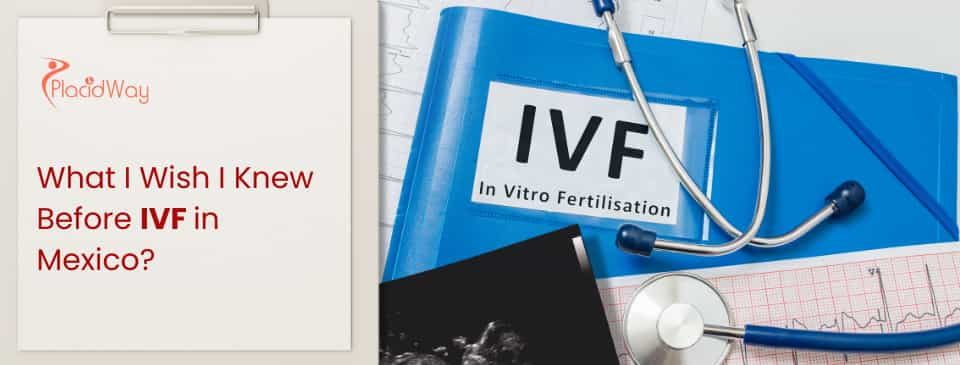Why Choose IVF in Mexico?
The journey to parenthood can be a winding road, and for many, In Vitro Fertilization (IVF) is a beacon of hope. But the high cost in countries like the United States and the UK can make it feel out of reach. This is where IVF in Mexico enters the conversation. As a leading destination for medical tourism, Mexico offers a compelling combination of advanced fertility care, experienced specialists, and prices that are often a fraction of what you'd pay at home. It’s a chance to receive world-class treatment while potentially saving tens of thousands of dollars. But traveling to another country for such a significant medical procedure naturally comes with a lot of questions. Is it safe? Are the clinics reputable? What are the real success rates?
This guide is designed to be the resource you're looking for. We'll explore everything you need to know—from the nitty-gritty of costs and legal considerations to the logistics of planning your trip. The goal is to provide clear, trustworthy answers to help you feel confident and prepared as you consider taking this important step in your fertility journey.
What is the Average Cost of IVF in Mexico?
The affordability of IVF in Mexico is its biggest draw. This lower price point is not due to a lower quality of care but rather the country's lower overhead costs for medical facilities and staff. The final price can depend on several factors, including the specific clinic, the city (Cancun might be slightly more expensive than Tijuana), and the complexity of your case.
It's crucial to get a detailed breakdown of what the quoted price includes. A standard package usually covers the egg retrieval procedure, anesthesia, fertilization in the lab (ICSI is often included), and a fresh embryo transfer. However, costs for fertility medications, pre-treatment testing, genetic screening of embryos (PGT-A), and embryo freezing are often extra. Always ask for an all-inclusive quote to avoid surprises.
Is IVF in Mexico Safe and Regulated?
Safety is a valid concern when considering medical treatment abroad. The best fertility clinics in Mexico are state-of-the-art facilities staffed by highly qualified, often US-trained, reproductive endocrinologists. These clinics follow strict hygiene and safety protocols that align with global standards set by organizations like the American Society for Reproductive Medicine (ASRM) and the European Society of Human Reproduction and Embryology (ESHRE).
Regulatory oversight is managed by COFEPRIS (the Federal Commission for the Protection Against Sanitary Risks), which ensures clinics meet national standards for medical procedures and lab practices. To ensure your safety, do your homework: choose a clinic that is transparent about its accreditations, technology, and the credentials of its medical team.
How Do IVF Success Rates in Mexico Compare to the US or UK?
Many people worry that lower costs might mean lower success rates, but this is not the case. The technology and techniques used in leading Mexican clinics are the same as those used worldwide. Success rates are influenced by many factors, with the woman's age being the most significant. Generally, you can expect to see success rates in these ranges:
- Women under 35: 50-70% success per cycle
- Women aged 35-40: 40-55% success per cycle
- Women over 40: 15-35% success per cycle
When comparing clinics, ask for their specific live birth rates per embryo transfer, broken down by age group. Reputable clinics will be transparent with their data. Using donor eggs can significantly increase success rates, often to over 60-70% per cycle, regardless of the recipient's age.
How Do I Choose the Best Fertility Clinic in Mexico?
Selecting the right clinic is the most important decision you'll make. Look for a best fertility clinic in Mexico that has board-certified reproductive endocrinologists and an experienced embryology team. The quality of the lab is paramount in IVF, so ask about their accreditation and technology.
Read reviews from other international patients on independent websites. How was their experience with communication? Did they feel supported? A good clinic will assign you a bilingual case manager who can answer your questions promptly and guide you through every step. Finally, schedule a virtual consultation before committing. This allows you to "meet" the doctor, discuss your case, and get a feel for their approach.
How Long Do I Need to Stay in Mexico for an IVF Cycle?
The typical IVF timeline requires you to be near the clinic for the ovarian stimulation, egg retrieval, and embryo transfer phases. The process starts on day 2 or 3 of your menstrual cycle. You'll take injectable medications for about 10-12 days to stimulate your ovaries, during which you'll need several monitoring appointments (ultrasounds and blood tests).
Once your follicles are ready, the egg retrieval is scheduled. The embryo transfer happens 3 to 5 days after that. Many patients choose to stay for the full 18-21 days to have all their monitoring done at the clinic. Alternatively, some clinics coordinate with a doctor in your hometown for the initial monitoring, allowing you to travel to Mexico for just the final week covering the retrieval and transfer.
Is Gender Selection Legal in Mexico?
Unlike many countries, including Canada, the UK, and Australia, Mexico has flexible laws regarding gender selection. This is typically done using Preimplantation Genetic Testing for Aneuploidy (PGT-A). During an IVF cycle, a few cells are biopsied from each embryo and tested.
This testing not only reveals the sex (X or Y chromosomes) but also screens for chromosomal abnormalities like Down syndrome, increasing the chance of a healthy pregnancy. Because of this dual benefit, many intended parents opt for PGT-A. If you are interested in family balancing, Mexico is one of the most accessible and affordable options globally.
Feeling ready to take the next step? Explore top-rated fertility clinics and get personalized, no-obligation quotes for your IVF in Mexico journey through PlacidWay.



.png)




Share this listing